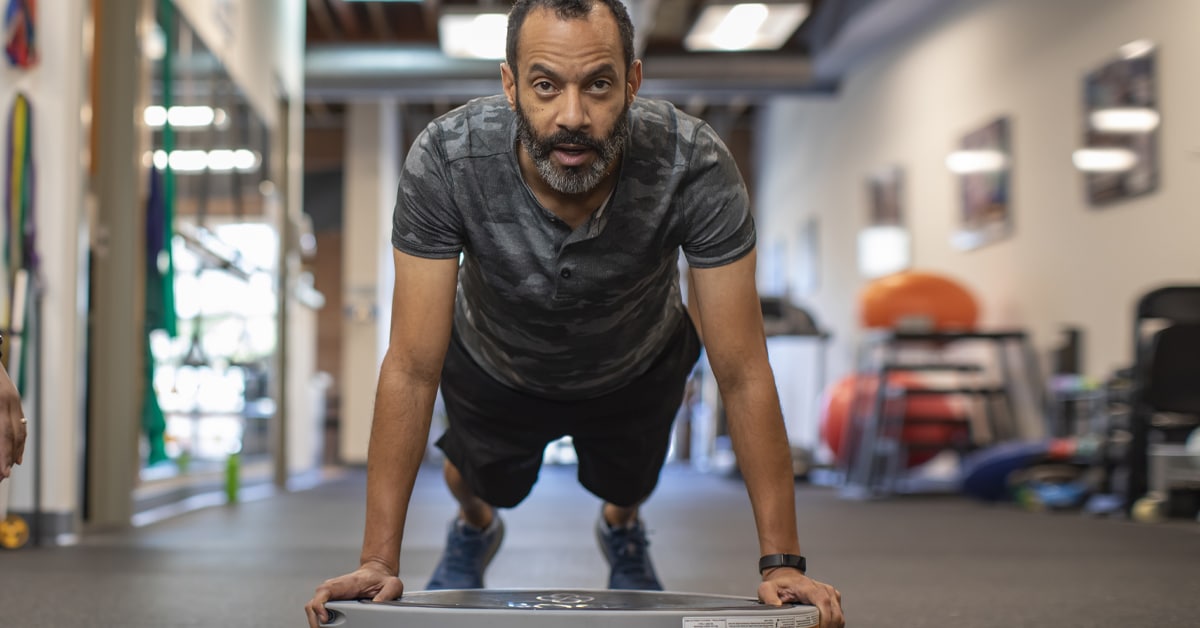Shoulder strength is the unsung hero of everyday activities, from carrying grocery bags to embracing loved ones. Whether you’re aiming for peak athletic performance or simply seeking to enhance your daily range of motion, a robust shoulder routine is paramount. In this guide, we’ll explore the dynamic world of shoulder strength, offering a diverse set of exercises to strengthen your shoulders and insightful tips for an effective and empowering shoulder workout.
The Role of Shoulder Strength
The shoulder girdle is a cluster of muscles and joints, and they play a pivotal role in our physical functionality. Strong shoulders and healthy arm function are essential, whether you’re combating the sedentary effects of desk work or gearing up for athletic challenges, investing in shoulder strength is an investment in your overall well-being.

Understanding Shoulder Anatomy
Knowing how your shoulders function is key to achieving strong, stable movement. The shoulder is one of the most flexible yet complex joints, involving three main bones (the clavicle, scapula, and humerus) and a network of muscles, tendons, and ligaments. Here’s a quick breakdown to help you understand what you’re working with:
- Shoulder Joint: Also known as the glenohumeral joint, this is the main ball-and-socket joint that provides a wide range of motion.
- Rotator Cuff: This group of muscles and tendons stabilizes the shoulder and is crucial for shoulder stability and mobility.
- Shoulder Blade (Scapula): Essential for shoulder alignment and movement; exercises focusing on shoulder blade control can boost shoulder stability.
- Deltoid Muscle: This main shoulder muscle powers lifting and raising motions.
When you understand these parts, you can target them more effectively through specific exercises, reducing strain and building balanced strength.
Exercises to Strengthen Your Shoulders
To strengthen your shoulder muscles, try incorporating the following exercises:
- Shoulder Rows
- Using a resistance band, pull evenly towards the side of the body with both arms from an extended position.
- Start with two sets of 10 reps
- Focus on standing straight and not elevating the shoulders as you pull
- Y-Raises
- Lie facedown on an incline bench or physioball and raise your arms to form a Y shape.
- Aim for two sets of 10 raises.
- Guidance: Focus on squeezing your shoulder blades together. It’s important to raise the arms slowly and not cause pain by being too aggressive.
- Rotator Cuff Internal and External rotation
- Strengthen the rotator cuff with internal and external rotation exercises. For internal rotation, use a resistance band anchored at elbow height, keep your elbow at your side bent at a 90-degree angle, and rotate your arm across your body. For external rotation, maintain the band position, but rotate your arm outward.
- Perform two sets of 15 reps for each rotation.
- Guidance: Keep movements controlled to target the rotator cuff and shoulder muscle effectively.
Strategies for Effective Shoulder Empowerment:
As powerful as the shoulder is, it’s also prone to injuries. Following these injury prevention tips can help you stay consistent with your strengthening routine without setbacks:
- Diversify Your Routine: Include a variety of exercises to strengthen your shoulders and improve shoulder stability.
- Mindful Form: Prioritize proper form over heavy weights to prevent injury and enhance shoulder mobility exercises effectiveness. Form is critical, especially when working with an affected arm.
- Improve Range with Mobility Work: Incorporate mobility exercises that can enhance flexibility, helping you achieve both strong shoulders and healthy movement patterns.
- Focus on Physical Therapy Benefits: Many of these exercises are common in rehabilitation physical therapy routines, helping to restore function to an affected arm or injured area. This approach supports a healthy arm and optimizes shoulder health.
Advanced Challenges for Shoulder Mastery: For those seeking an extra challenge:
- Plyometric Exercises: Integrate explosive movements like medicine ball throws.
- Functional Training: Mimic real-life movements to enhance practical strength.
- Dynamic Stability Work: Include exercises on unstable surfaces for added difficulty.
Embark on the journey to elevate your shoulder strength, and you’ll discover newfound resilience and agility. These exercises, coupled with consistency and a commitment to mindful growth, will not only empower your shoulders but also enrich your overall physical experience. It’s time to elevate your strength and embrace the transformative power of robust shoulders—your daily activities will thank you!
Article Reviewed by Ryan Cummings, PT, DPT, MS, OCS, CEEAA
Ryan Cummings, PT, DPT, MS, OCS, CEEAA is a practicing physical therapist and the Coordinator of Clinical Teams at Ivy Rehab Network. Dr. Cummings is a board-certified orthopedic specialist and certified exercise expert for aging adults with nearly 20 years of clinical experience. He has advanced training in manual therapy, sports rehabilitation, and geriatric physical therapy and has served as clinical faculty for orthopedic and geriatric residents.





